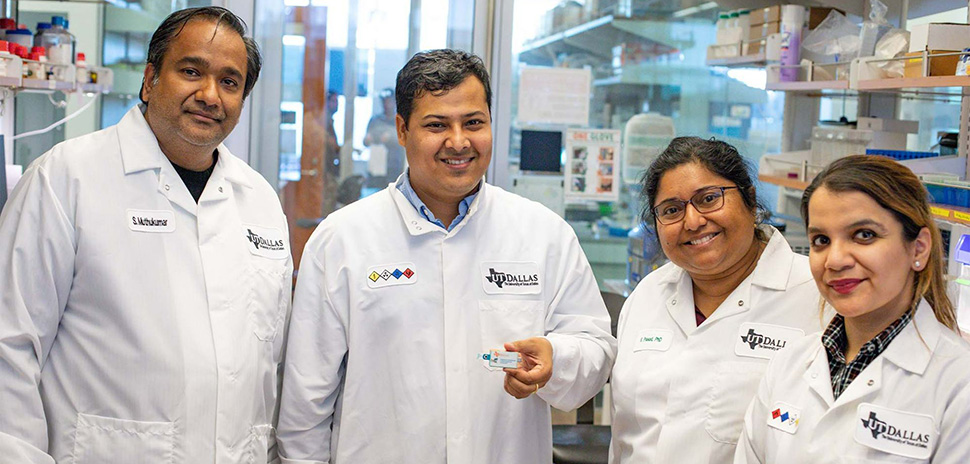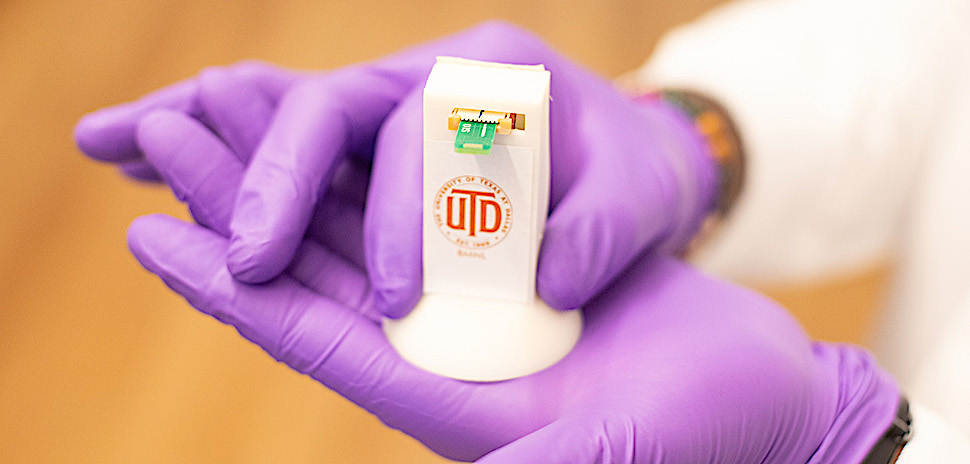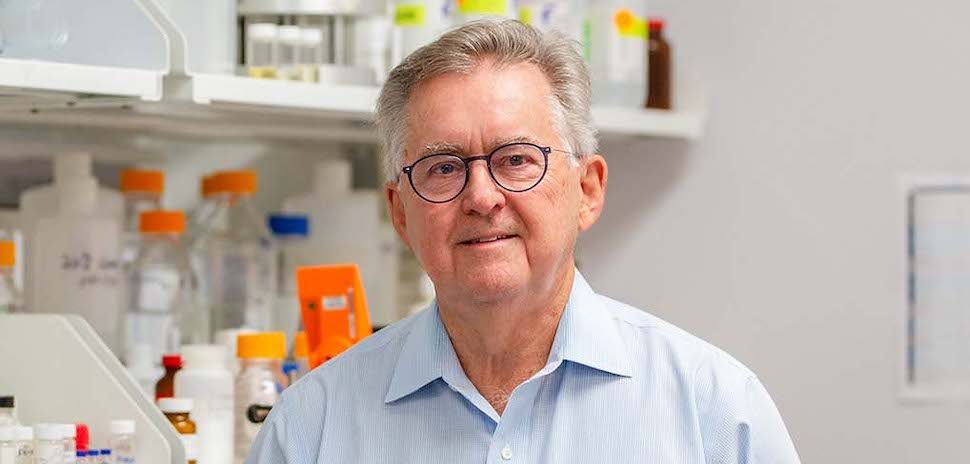Fentanyl use is one of the leading health crises in the U.S., killing more than 150 people per day from overdoses related to the synthetic opioid.
To help combat fentanyl use, researchers at the University of Texas at Dallas have developed a “first-of-its-kind,” handheld electrochemical sensor that can accurately detect fentanyl in urine “within seconds.”
UTD said the proof-of-concept technology can detect even trace amounts of fentanyl with 98% accuracy using a small portable device, without costly and time-consuming lab analysis.
A study demonstrating the device was published in the Jan. 10 print edition of American Chemical Society Applied Materials & Interfaces.
Goal is to help first responders
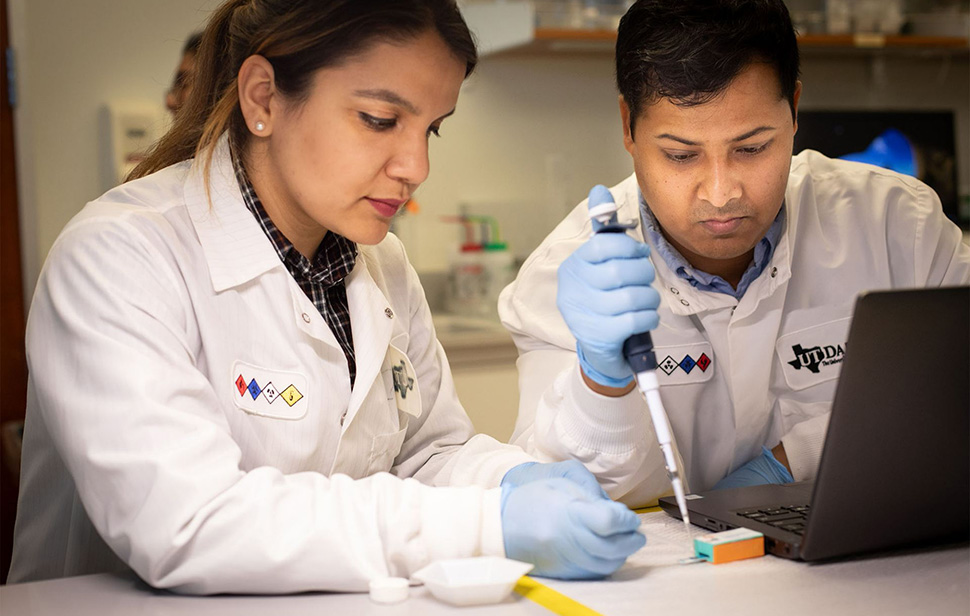
[Photo: UTD]
“There’s an urgent demand for an easy-to-use, portable, miniaturized device that can detect fentanyl with high specificity and share results immediately to an internet-connected device,” Dr. Shalini Prasad, professor and department head of bioengineering in the Erik Jonsson School of Engineering and Computer Science, said in a statement.
Prasad is corresponding author of the study and a Cecil H. and Ida Green Professor in Systems Biology Science. “Our study demonstrates the feasibility of a highly accurate sensor to detect fentanyl within seconds,” she said.
Test includes use of ‘gold nanoparticles’
The researchers use a mix of substances, including gold nanoparticles, to detect fentanyl with an electrochemical sensor, UTD said. The prototype, which could be used to test for fentanyl via urinalysis, is a precursor to a test to detect the drug in saliva. The technology also could be used to test substances for fentanyl by mixing a sample with water and dropping the liquid onto the sensor.
Fentanyl is a synthetic opioid 50 times more potent than heroin and 100 times more potent than morphine, according to the Centers for Disease Control and Prevention. UTD said the illegally manufactured fentanyl commonly is mixed with other drugs, and an amount as small as 2 milligrams—equal to 10 to 15 grains of table salt—can be lethal.
Research has determined fentanyl is detectable in urine for up to 72 hours. UTD said that its researchers are working to advance the technology to detect fentanyl in hair.
Their ultimate aim is to develop a test to detect fentanyl in saliva, which could help first responders make treatment decisions for someone who has overdosed, Prasad said.
‘Like cheese to catch a mouse’
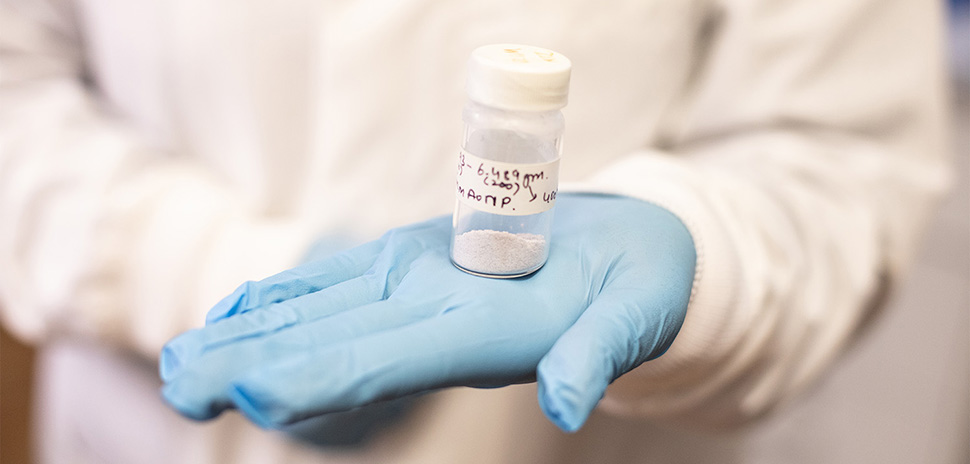
Researchers use a mix of substances, including gold nanoparticles, to detect fentanyl with an electrochemical sensor. [Photo: UTD]
The university said the device contains an electrochemical sensor that generates electrical signals based on chemical reactions. Developing a sensor to detect fentanyl posed a challenge because the synthetic opioid is a nonvolatile compound, which means it does not produce an electrochemical signature.
To capture fentanyl with an electrochemical sensor, UTD said researchers used a molecular cage-like structure they compared to a mousetrap. It consists of several substances, including gold nanoparticles. And, for the “cheese,” UTD said that researchers had to get creative.
Bioengineering researcher Dr. Anirban Paul, first author of the paper, used reverse engineering to find a solution, UTD said.
Paul, who moved from India to work with Prasad, decided to try using naloxone, a lifesaving medication that can reverse an opioid overdose. The researchers conducted computational tests to understand how the compounds interact so they could determine how to deploy naloxone to draw fentanyl to it like a magnet.
“Naloxone is used to decrease the power of fentanyl,” Paul said in a statement. “I had the idea to use naloxone to capture fentanyl, like cheese to catch a mouse.”
Researchers said they tested urine from a lab that was spiked with low, medium, and high levels of fentanyl.
They said that the urine is dropped onto a test strip and that if the drug is present, the naloxone interacts with it and generates a signal. The device detected fentanyl up to 100 parts per million in spiked urine samples, the team said.
Collaborating with EnLiSense
Study author Ivneet Banga, a research project manager in bioengineering, helped plan the experiments and synthesize the materials, UTD said. Last year as a doctoral student, Banga won a second-tier Baxter Young Investigator Award for a handheld breath analyzer that can detect respiratory diseases, including COVID-19, in seconds. Banga said she hopes the fentanyl sensor can help prevent deaths from overdoses.
The fentanyl sensor was developed in collaboration with EnLiSense, an Allen company that develops lifestyle-based sensors and devices. Prasad and the current study co-author Dr. Sriram Muthukumar are co-founders of EnLiSense.
![]()
Get on the list.
Dallas Innovates, every day.
Sign up to keep your eye on what’s new and next in Dallas-Fort Worth, every day.










